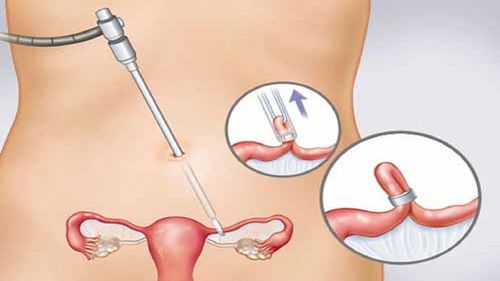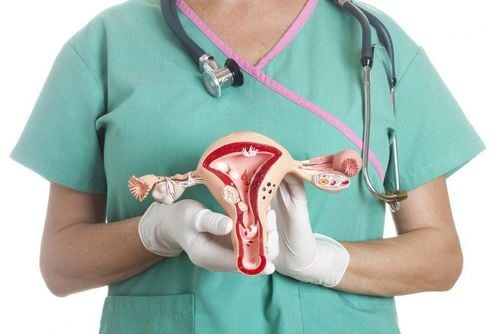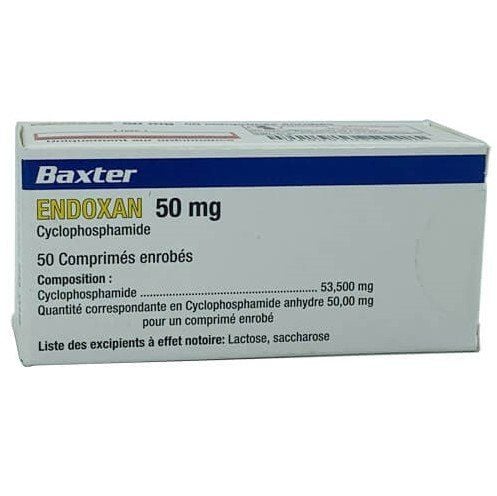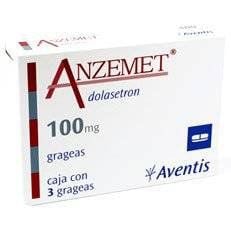This is an automatically translated article.
The article is made by doctors of Internal Oncology Department, Vinmec Times City International General Hospital
Ovarian cancer is the second most common cancer of the reproductive organs in women. It usually occurs in women between the ages of 50 and 65. A woman's risk of ovarian cancer is about 1.4%.
There are several different types of cancer that can start in the ovary; The most common is called "epithelial" ovarian cancer. This topic will discuss the treatment of epithelial ovarian cancer, with a focus on chemotherapy after initial surgery. Diagnosis and classification of ovarian cancer are discussed separately.
1. Ovarian cancer surgery
Ovarian cancer is diagnosed (and staged) through exploratory surgery. The surgeon will also remove all visible cancer. In most cases, the uterus, fallopian tubes, and ovaries need to be removed. This is done to make sure as much of the cancer-related tissue is removed as possible and to help prevent the cancer from spreading. In some situations, doctors recommend treatment with chemotherapy before surgery.
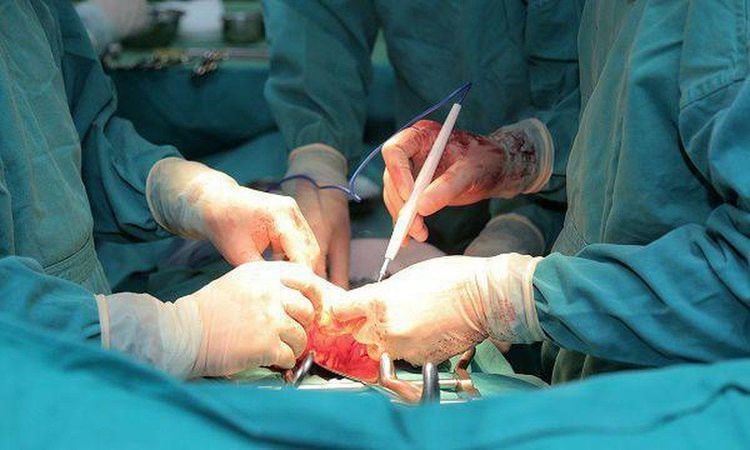
Phương pháp phẫu thuật ung thư buồng trứng
2. Is chemotherapy required after surgery?
Most women with ovarian cancer are treated with chemotherapy (in addition to surgery). After as much of the cancer is surgically removed as possible, there is still a risk that the cancer cells will persist and come back or metastasize to other parts of the body. Adjuvant chemotherapy after surgery to destroy these cells; prevent cancer from coming back and reduce the risk of dying from ovarian cancer.
Whether chemotherapy is needed depends on the stage of the disease and how malignant the tumor is (also known as the "grade" of the tumor); This is determined during or after surgery by the pathologist based on the tissues under the microscope. In general, chemotherapy is recommended for all women newly diagnosed with ovarian cancer, except in the case of women in stage IA or IB (also called "early stage disease") that surgery alone is enough. Women with late-stage disease receive chemotherapy. Although advanced cancer is associated with a poorer prognosis, chemotherapy can help relieve symptoms and slow disease progression. The stage and “grade” of the cancer cells will also affect which chemotherapy drugs your doctor recommends.
3. What is chemotherapy?
Chemotherapy is the use of drugs to stop or slow the growth of cancer cells. Chemotherapy interferes with the ability of developing cells to divide or multiply. Because most of an adult's normal cells don't grow actively, they won't be affected as much by chemotherapy as cancer cells. However, the cells in the bone marrow (where blood cells are produced), hair follicles, and the lining of the gastrointestinal tract are of the proliferative type, so they will be affected by chemotherapy and manifest through the effects of chemotherapy. side effects of chemotherapy drugs (such as hair loss or nausea, diarrhea...)
What types of chemotherapy are used? Among the most commonly used chemotherapy agents in the treatment of ovarian cancer are taxanes (paclitaxel or docetaxel) and platinum agents (carboplatinum or cisplatinum). Studies have demonstrated that platinum- and taxane-containing chemotherapy improves the survival of women with ovarian cancer compared with other therapies. A combination of a platinum drug (usually carboplatinum) and a taxane (usually paclitaxel) is the standard chemotherapy regimen.
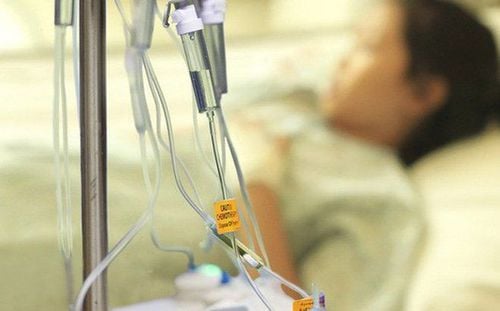
Các loại thuốc điều trị ung thư được truyền vào cư thể qua đường tĩnh mạch
4. How is chemotherapy administered?
Most chemotherapy drugs are given intravenously (by IV). However, in some situations, doctors may use another treatment that involves giving chemotherapy both by IV and directly into the abdominal cavity (peritoneum). This is called intravenous/intraperitoneal (IV/IP) therapy.
In general regardless of the treatment used (IV or IV/IP), chemotherapy drugs are given in a carefully defined sequence over a period of several months. Chemotherapy courses are usually given weekly or every three weeks. A "course" of chemotherapy involves a period of treatment and a break afterwards to give the body time to recover. During this time, the patient will be closely monitored for signs of drug side effects.
5. Chemotherapy before surgery
In most cases, chemotherapy is given after surgery for ovarian cancer. However, some doctors may give several cycles of chemotherapy before surgery, for certain patients (known as "neo-adjuvant chemotherapy"). The goal is to reduce the size of the tumor and make it easier for the surgeon to remove all of the cancer. Neoadjuvant chemotherapy may also be used in situations where the cancer has metastasized (making the initial surgery risky) or the patient is not healthy enough for surgery.
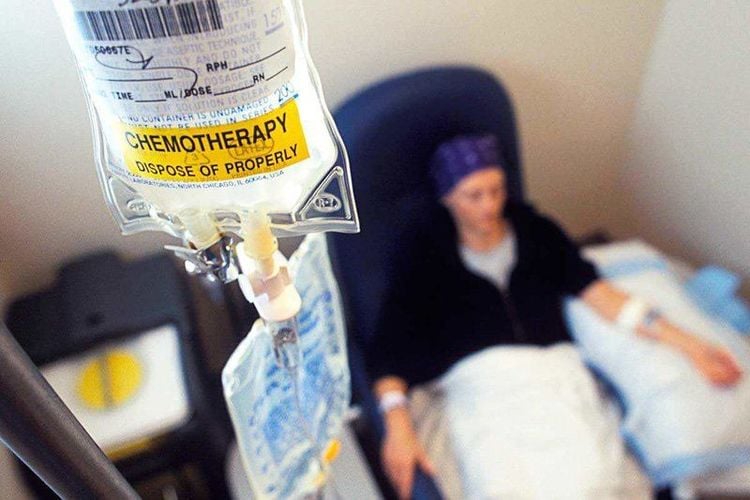
Trước khi phẫu thuật, người bệnh được hóa trị
6. How do I know if chemotherapy is working?
For the case of adjuvant chemotherapy after the tumor has been removed, the main effect of chemotherapy is the time when the disease is stable, the disease does not recur
Complete response: all lesions disappear , no more signs of disease. Biological index within normal limits (if previously elevated) Partial response: tumor partially shrunk (usually more than 50% of original size). The biomarkers (if any) may be low, but the disease still exists. Stable disease: the tumor does not regress but also does not develop further, the disease is stable. Only biological scores (if any) usually do not increase, stay the same or decrease insignificantly. Progressive disease: Tumor increases in size or additional tumors appear in other locations. Only high biological score (if any)
7. What are the side effects of treatment?
Chemotherapy can cause side effects during and after treatment. The type and severity of these side effects depend on the type and chemotherapy drugs used. Side effects that occur during chemotherapy are usually temporary. The most common side effects are nausea, vomiting, mouth pain, decreased blood cells, and hair loss.
Another drug, bevacizumab, is sometimes given alongside chemotherapy drugs. Bevacizumab can cause side effects including increased blood pressure, nosebleeds, dizziness, headache, and delayed wound healing. Women with ovarian cancer treated with bevacizumab may have an increased risk of a large bowel tear during treatment.

Người bệnh xuất hiện buồn nôn, nôn do tác dụng phụ khi điều trị ung thư
Hair growth after chemotherapy
For some people who have undergone cancer treatment, hair growth after chemotherapy is a very significant sign. Chemotherapy kills cancer cells, but also kills healthy cells. That's why most people will lose at least some of their hair while undergoing chemotherapy.
Hair growth after chemotherapy :
Hair loss can be all or part of each person's hair, or for some people it's just that the hair becomes thinner or more brittle. People who may find their hair grows faster after chemotherapy. Hair regrowth can begin as soon as chemotherapy is no longer attacking healthy cells. Hair growth rate depends on age, health and other factors, for example ethnicity.
How long does it take for hair to start growing after chemotherapy?
Healthy cells in the hair follicles that support hair growth are affected by chemotherapy treatment.
Therefore, cancer patients receiving chemotherapy may experience hair loss, hair on the head, eyelashes, eyebrows and other places on the body.
Hair loss usually occurs after 2 weeks of treatment and becomes more severe in the next 1-2 months.
Hair will not grow back immediately after the last chemotherapy session. This delay is because chemotherapy drugs take time to clear from the body and stop attacking healthy dividing cells.
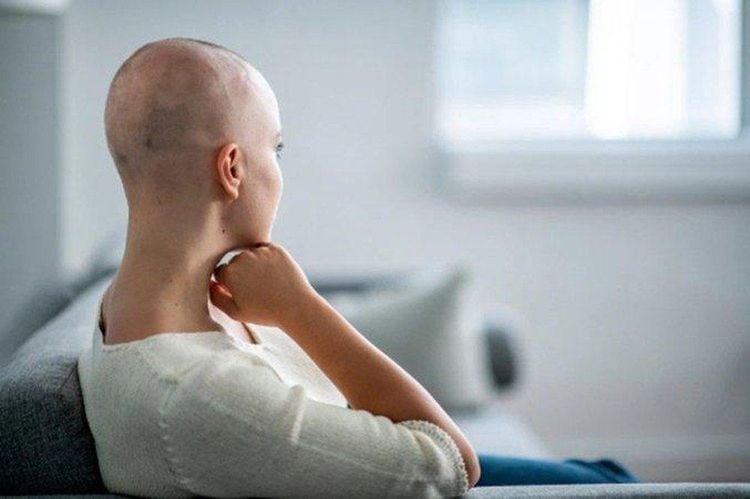
Tóc rụng trong quá trình điều trị ung thư
Most patients will begin to see an amount of thinning, translucent hair a few weeks after the last chemotherapy treatment. And real hair starts to grow within a month or two after that.
Hair Growth Timeline
All hair will go through a rest period, during the non-growth period. Furthermore, the hair will fall out when it reaches a certain length or when it is pulled.
The following timeline shows what happens after chemotherapy:
2-3 weeks: Light, fine hairs 1-2 months: Stronger hairs begin to grow 2-3 months: Hair grows approx. 2.5 cm 6 months: 5-7cm hair growth, covering bald patches. 12 months: Hair may have grown 10-15 cm and is long enough for brushing or styling It can take several years to grow your hair the way it used to, especially for people who used to have long hair.
Ovarian cancer screening to detect the disease in time has an important meaning in successful treatment. Currently, Vinmec International General Hospital has a package of screening and early detection of gynecological cancer, helping to detect cervical cancer, uterine cancer, ovarian cancer early even when there are no symptoms.

Khám sức khỏe phụ khoa định kỳ giúp phụ nữ phát hiện sớm bệnh lý bất thường
When registering for Gynecological Cancer Screening and Early Detection Package, customers will receive:
Examination and consultation with a specialist in Obstetrics and Gynecology. Cervical cancer screening by tests such as cytology by Liqui Prep method, automated system HPV genotype PCR test, transvaginal ultrasound test of uterus and ovaries. To learn more about Ovarian cancer screening and treatment at Vinmec International Hospital, you can contact Hotlines of hospitals, or register online HERE
Articles write reference source: Medical news today 2019, Uptodate 2020
MORE:
What are the ways to treat ovarian cancer? Ovarian cancer: Intraperitoneal or systemic chemotherapy? Laparoscopic surgery - good solution for early ovarian cancer




